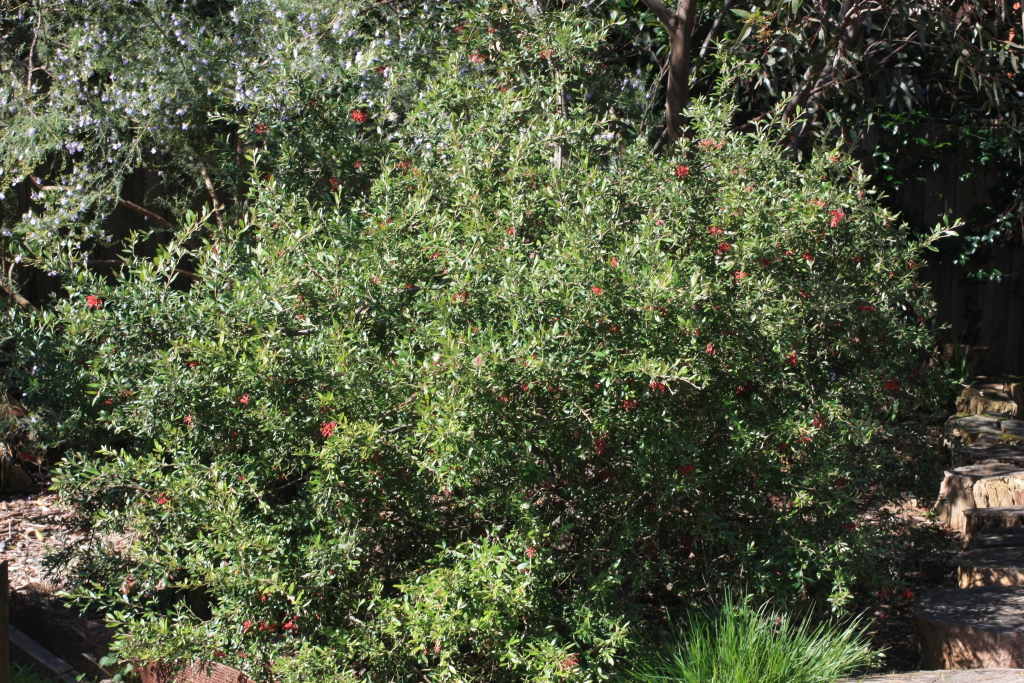Grevillea monslacana
Molyneux & Stajsic Lake Mountain GrevilleaSpreading to erect shrub (1–)1.5–3.5 m high, 1.5–3 wide. Branchlets densely tomentose. Leaves entire, narrowly obovate or occasionally narrowly elliptic (20–)30-70(–120) mm long, (4–)8–15(–25) mm wide; upper surface glabrous, or with appressed silvery hairs just above petiole, variably dull or glossy; margins distinctly recurved; lower surface sericeous, lateral veins obscure to evident, reticulum absent. Conflorescences usually terminal, decurved to pendulous, simple to 4-branched. Primary peduncles (0–)4–10(–25) mm long, indumentum tomentose; floral rachises (10–)15–30 mm long. Very early flower buds with the perianth below the limb wholly apricot-coloured or light ferruginous, the limb same colour or brownish grey. Limb of flower buds subglobose in side view, apex obtuse. Limb-segments of tepals (mature pre-anthesis flowers) not keeled or obscurely keeled along external midline. Dorsal tepals 15–22 mm long, 1.9–2.5 mm wide. Perianth outer surface (below limb) ferruginous or tan-coloured, epidermis clearly visible, loosely subsericeous; inner surface densely bearded near base; perianth inner surface pinkish-white or whitish. Pistil (16–)18–20(–23) mm long, ovary stipitate, glabrous, style pink, reddish-pink or rarely whitish; face of pollen strongly oblique to style, convex. Fruits glabrous. Flowering has been recorded primarily Aug.-Jan., but in the absence of snow can occur sporadically throughout the year.
HNF, VAlp. Endemic to Victoria, occuring in a geographically restricted area to the north and northeast of Marysville, in the Mt Margaret and Lake Mountain region. Grevillea monslacana occurs in montane wet sclerophyll forest and subalpine open woodland, between 1100 and 1400 metres above sea level.
 Spinning
SpinningSynonyms
Stajsic, V.; Molyneux, W.M. (2006). Taxonomic studies in the Grevillea victoriae F.Muell. species complex (Proteaceae: Grevilleoideae) I. Descriptions of nine previously segregated, and three new taxa.. Muelleria 22: 22–76.

